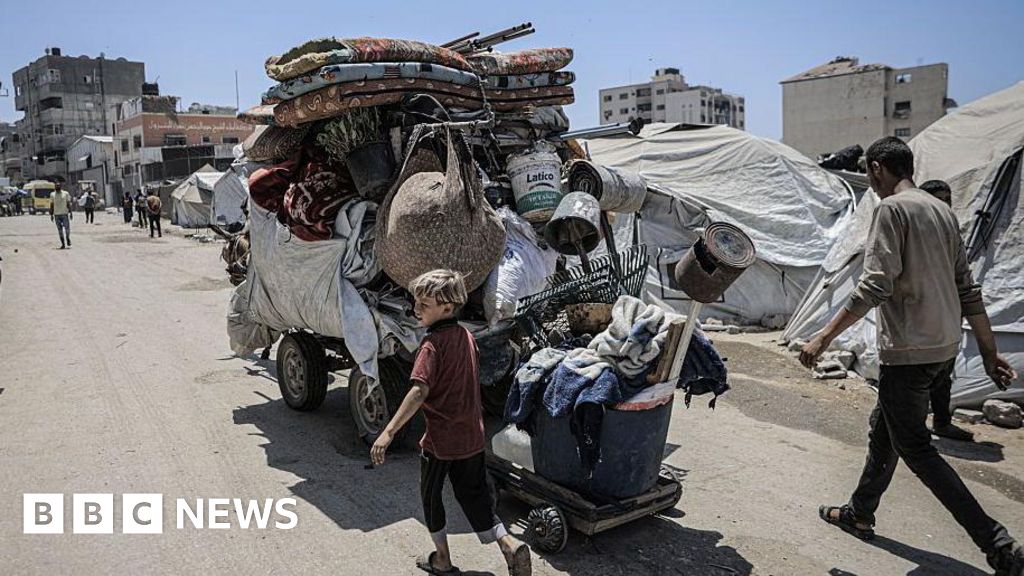Israel has ordered evacuations in northern Gaza as military operations intensify, while former U.S. President Donald Trump advocates for a ceasefire. The directive comes amidst escalating violence, with at least 86 Palestinians killed in Israeli attacks within 24 hours, according to the Hamas-run health ministry.
Residents of Gaza City and Jabalia are being urged to move south towards al-Mawasi, a coastal area deemed a “safe zone.” However, this designation has been tragically contradicted by recent events. A strike in al-Mawasi claimed the lives of five members of the Maarouf family, including three children. “They bombed us while we were sleeping on the ground,” said Iman Abu Maarouf, the mother of the deceased children.
Intensified Military Operations
The Israel Defense Forces (IDF) have increased their military presence in northern Gaza, with spokesperson Avichay Adraee stating their aim is to “eliminate terrorists and terrorist infrastructure.” This escalation has resulted in widespread destruction, with medics and residents reporting significant damage and casualties.
On Sunday, an Israeli airstrike on a tent housing displaced individuals in al-Mawasi killed five people. The IDF has not provided a specific response to the incident but maintains that it “follows international law and takes feasible precautions to mitigate civilian harm.”
Diplomatic Efforts and Ceasefire Negotiations
Amidst the ongoing conflict, diplomatic efforts to broker a ceasefire and secure the release of hostages held by Hamas are intensifying. Trump has expressed optimism about a potential ceasefire, stating on Truth Social that Israeli Prime Minister Benjamin Netanyahu is negotiating a deal with Hamas.
Qatari mediators are hopeful that U.S. pressure could facilitate a resolution, following a recent truce between Israel and Iran. Netanyahu has emphasized the importance of victory over Iran, suggesting that it opens up new possibilities for resolving the Gaza conflict and rescuing hostages.
Humanitarian Concerns and Aid Challenges
The humanitarian situation in Gaza remains dire, with a blockade on aid deliveries exacerbating the crisis. Although Israel partially eased the blockade after international pressure, the distribution of aid has been fraught with challenges. The Gaza Humanitarian Foundation (GHF), a U.S. and Israeli-backed aid group, has faced criticism from UN agencies.
Juliette Touma, communications director for the UN agency for Palestinian refugees, described the GHF’s aid system as “a killing field,” asserting that orderly aid distribution can only be managed by the UN and other humanitarian organizations.
Despite these criticisms, GHF boss Johnnie Moore has defended the organization, stating that reports of casualties near aid sites are not entirely accurate.
Historical Context and Future Implications
The current conflict in Gaza is part of a long-standing and complex geopolitical struggle. Previous ceasefires, such as the two-month truce that collapsed in March, have been fragile and short-lived. The ongoing violence and humanitarian crisis highlight the urgent need for a sustainable resolution.
As international mediators continue their efforts, the world watches closely, hoping for a breakthrough that could bring lasting peace to the region. The potential for a ceasefire, coupled with the release of hostages, could mark a significant turning point in the conflict. However, the path to peace remains fraught with challenges, and the international community’s role will be crucial in shaping future developments.
